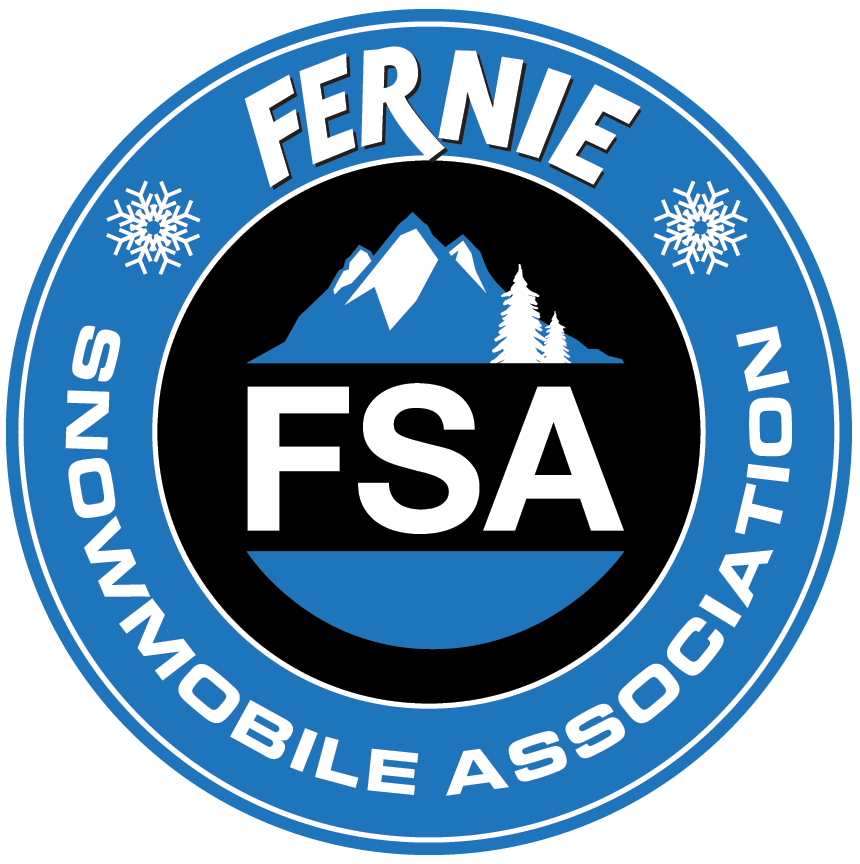
SAFETY
Sledding takes place in an uncontrolled backcountry environment and is subject to many safety, government, and legal considerations. To set you up for success, we have assembled the following information to help you enjoy your trip responsibly.
KNOW BEFORE YOU GO
-

OHV REGULATIONS & LAW IN BC
British Columbia’s Off-Road Vehicle Management Framework promotes the safe and responsible use of ORVs on Crown land and prescribed private lands.
All snowmobiles operating on public lands are required to be registered and have a number plate or decal visible. All riders over 12 must carry photo ID. If you are snowmobiling on forest service roads (groomed trails) or loading/unloading in the staging areas you are also required to carry $200k liability insurance.
Each rider must be wearing an approved safety helmet and use lights in low-visibility conditions. Children must be supervised at all times and must meet the manufactures minimum age and weight requirements.
-

ROAD USE REGULATIONS
The FSA maintains over 160km of designated winter recreation trails in the valley, many of which utilize snow-covered Forest Service Roads. There are many unmaintained riding areas as well. Conflict arises when sledders using these unmaintained areas impede the safety and work activities of permitted industrial partners (logging).
Under the Forest Service Road Regulations (law) section 3(3) You cannot snowmobile on a plowed forest service road or ANY road that is otherwise fit for vehicles. If you choose to drive your vehicle up to the snowline on these plowed roads you must observe posted radio Call Up / Down procedures. Watch a great video explaining the details below.
-

MOTOR VEHICLE CLOSURE AREAS
The Elk Valley has several Access Management Areas (Motorized Closure Areas) to help protect wildlife corridors, sensitive ecosystems, and to provide opportunities for non-motorized recreation. Review and download the RDEK Regional Access Management Area Maps via the link below.
Note, quads or side-by-sides are considered motor vehicles, not snowmobiles. As such, they are NOT permitted in the ‘snowmobile exemption’ zones identified on the RDEK MVCA maps.
Please refer to the FSA Trail Map pdf for additional private land and seasonal sled closure areas under the Southern Rocky Mountain Management Plan.
-
AVALANCHE SAFETY
In Canada we are privileged to have some of the world's finest opportunities for winter backcountry exploration. But with this right to explore comes a responsibility—to yourself, your friends, and your family—to get avalanche training.
Avalanche Canada is your one-stop-shop. Get the current avalanche bulletin for where you will be riding today, find a course, see what other riders have been saying about the conditions, learn about the gear or take a free online primer course, find out when the next big snowfall is going to hit or where the freezing line will be.
It is all avalanche at www.avalanche.ca
-

SEARCH AND RESCUE
Snowmobiling is the single biggest activity in winter that results in Search and Rescue call outs (30%). The most frequent causes are injury, lost/disoriented riders, and riders exceeding their ability. In BC, search and rescue services are provided for FREE by calling 9-1-1.
Tips:
Leave a trip plan with friends at home.
There is no cell service in most Fernie riding areas. Cary a satellite based emergency communications device such as an inReach, Spot, or Zoleo.
Do not wait until it is too late to ask for help. Call early.
Get the training and cary the right gear to help yourself until professional help arrives.
-

TREE WELL / DEEP SNOW HAZARDS
Treewells are generally found in areas of deep snow where low hanging branches can create a canopy preventing snow from filing in around the base of a tree forming a pit of loose snow, almost like quicksand. As the snow builds up around the branches a deeper hold develops. Sledders who have fallen into treewells become immobilized, trapped under snow, and suffocate. This can also happen in gullies, trenches, and depressions in other areas.
Have a partner who remains in eyesight at all times. Avoid falling into treewells, particularly in an inverted position. Grab branches. Resist the urge to struggle. Make airpocket around your face. Yell for help or blow whistle. Rescuers: tunnel in from side using the ‘strategic shoveling technique’ as you would for avalanche.

